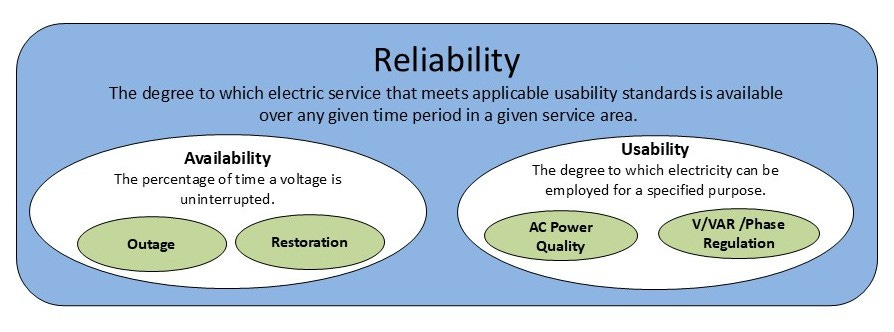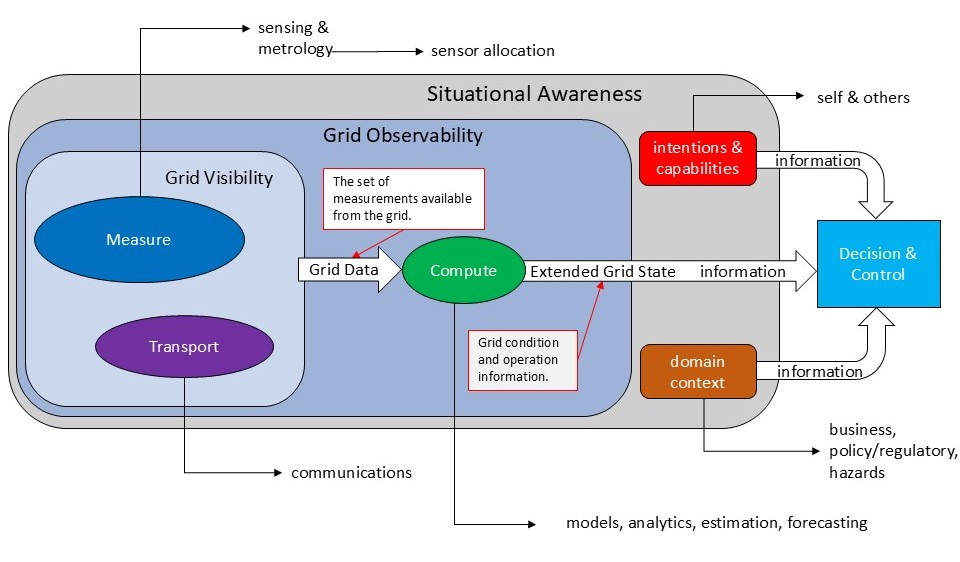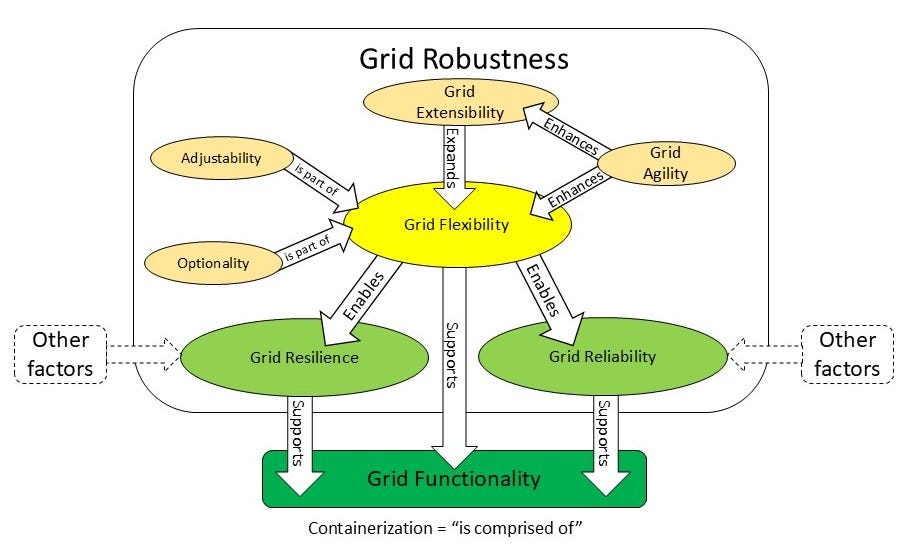Definitions Are Not Complete Without Structure
Definitions + structure provides a strong language to handle grid problems.
It is very common to treat a set of definitions related to a specific topic as individually wrapped items, listed with no detailing of their relationships to other definitions. This is unfortunate because providing and using the structure within which these definitions reside is a powerful means to reason about complex problems. Let’s look at three examples of what I mean by definition structure.
Now, there are many ways to represent definition structure. I prefer visual forms, and among the choices we have are trees (basically, taxonomies), stacks (layers), and containers. I will be using the container version here.
Here is the first example: reliability for electric grids.
It is easy to see how this could be drawn as a tree but I like this form better because it illustrates subsets graphically. As you can see, we may add short text definitions right in the diagram for some of the terms.
Here is another example: observability.
This version provides the structural relationships for visibility, observability, and situational awareness and implicitly indicates the definitions, but also shows ancillary elements and related processes. This definition set could also have been illustrated as a stack but this form captures the nesting structure very effectively.
Finally, let’s look at a multi-element definition set.
Here we label the connecting arrows with words or phrases that indicate the nature of the relationship.
Whether we write definitions in the diagram or not, we always provide a document that gives definitions of all the terms, along with a relationship discussion. Here is a pdf you can download that shows an example of using these techniques.
Regardless of how it is represented, definition structure is a powerful tool to help stakeholders reach a common understanding of (Ultra-Large-Scale) complex grid issues. The combination of well-formed definitions and their structure is a language we need.






